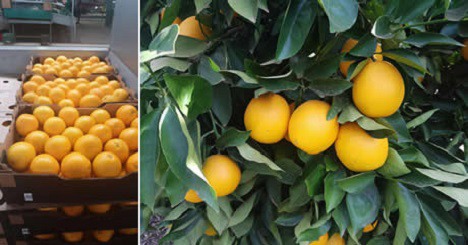A year ago tonnes of South African oranges were in bureaucratic limbo in European ports, arriving with documentation that had been valid upon sailing but invalid by the time it had reached Europe.
A new cold steri protocol for oranges was proclaimed with 23 days allowed for the switch-over, prompting South Africa to lodge its first ever World Trade Organisation dispute on the phytosanitary requirements relating to false codling moth.
Last year, one out of every four organically grown South African oranges had to be discarded due to damage inflicted by the cold treatment, according to Dutch investigative journalism outfit Follow The Money.

This year, from a trading outlook for conventionally grown citrus, the picture appears quite different, but it doesn't come easily.
“We can barely breathe until the fruit is on the shelves,” says an exporter, noting that Europe's ability to take large and small oranges is part of its appeal. “There’s so much that can happen along the way. “
By week 31, 44% of South Africa’s oranges (close to half its Valencias) had gone to Europe, despite the financial toll exacted by the new cold protocol on oranges and the latest sabre-rattling by Spanish producer unions which, a Dutch importer remarks, annually occurs as the duty deadline of 15 October approaches.
The sizing of this year's orange crop – large counts, in general – favours a European destination, plus the pull created by the early end to Spanish citrus.
“But careful – it has not been a case of exceptional demand from Europe, despite prices being stronger,” says an exporter from the Eastern Cape.
“We see that consumption is 20% to 30% lower, what with the high summer temperatures in Europe and financial pressure on consumers. The market was empty because the Northern Hemisphere had a shorter season. One should be cautious of the phrase ‘strong demand’ – it’s been because there was so little on the market that prices were better.”
FreshPlaza is told that exporters will now start turning their attention more towards China and the Far East (although the season's sizing doesn't lend itself to smaller fruit destinations like Malaysia and Singapore) especially given the number of citrus black spot interceptions (South Africa is disputing some of the 24 CBS interceptions so far) which eliminate a big percentage of eligible fruit from Europe.
Since the United States three years ago recognised that citrus black spot was not a transmissible disease and therefore no threat to its domestic citrus industry, Europe remains the only bloc in the world to criminalise citrus black spot which has no impact on internal quality.
South Africa’s position on the non-transmissibility of citrus black spot as well as false codling moth in the absence of live female moths - which it maintains is supported by scientific research - is supported by Dutch, Belgian and German importers who have skin in the game.
According to Follow The Money, two-thirds of all South African oranges (with a value of 314 million euro last year) arrive in Europe through the port of Rotterdam.
